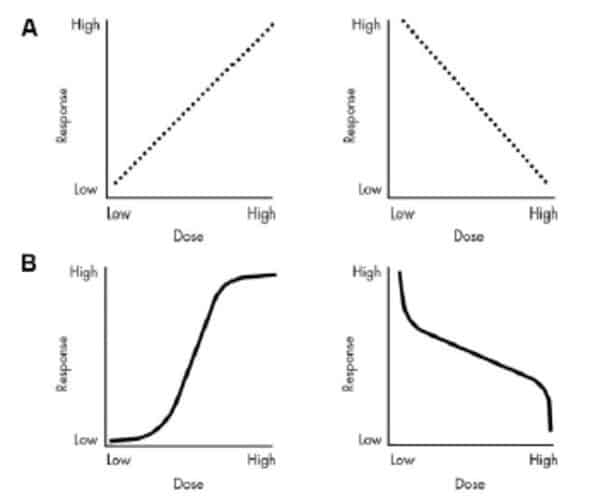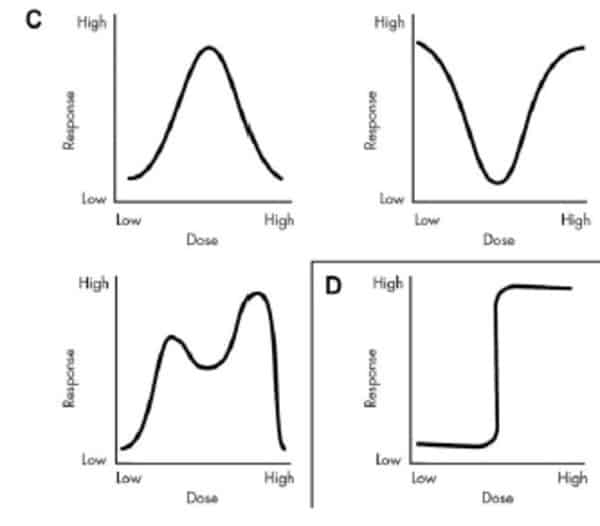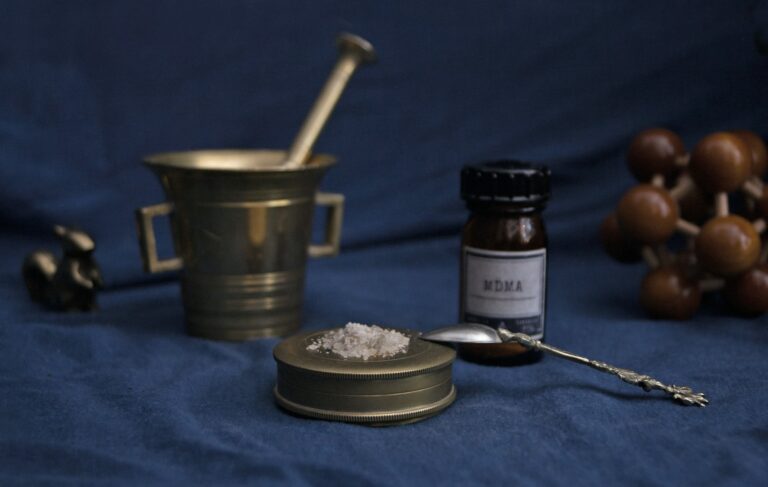As we work to understand the role of the Cannabis flower in promoting and defending our health and well-being, we need to approach the infinitely small but amazingly potent biochemicals like the unfolding terpene family and the still-expanding cannabinoid family with an updated understanding of the classic dose/response (D/R) model. Too many assumptions around drugs in general and Cannabis in particular rely implicitly on the classic model – double the dose, double the effects. We’ve all seen the straight line (monotonic) graph showing that every increase or decrease in the dose of a substance creates a consistent incremental response. More of substance A means more of effect B.

Scientists working in the area of human endocrinology are raising the alarm over the consequences of applying the classic model to subtle biochemicals. “Double the dose, double the response” worked with primitive chemicals like poisons, but with contemporary designer chemicals like pesticides and fungicides as well as with subtle biochemicals like Cannabis terpenes there is no straight-line response to dose, and dose or exposure often occurs below limits of detection while effects may continue to display.
The work of Dr. Laura Vandenberg is leading the way in this new discussion with work that focuses on the vast subtleties of the human endocrine system. Here are a few illustrations of variances in D/R curves she uses to illustrate the critical point that dose-response relationships can follow any pattern.


As endocrinologists like Dr. Vandenberg point out, substances like hormones can have a strong effect at very low levels but then have almost no effect, or have a contrary effect, when those levels change. I think we can be pretty sure everything from CBD and THC to terpenes and flavonoids share subtle interactive networks of properties, synergies, and body-mind effects. Like many bioactive substances Cannabis can have stronger and/or more variable effects at intermediate doses than at either high or low doses – I imagine that we’ve all found this true between strains and from one harvest to another. This is just another reason that so many are realizing that Cannabis is like wine, coffee and other of life’s natural pleasures – it varies in interesting and sometimes important ways.
The classic straight-line Dose/Response model, an unquestioned baseline assumption of most of the so-called science applied to Cannabis by regulators and bureaucrats, comes from the way potentially harmful substances including food additives, industrial chemicals, pesticides and medicines have been tested and regulated for years. In some ways, the assumptions behind D/R haven’t changed since the early days of chemistry interfacing with human beings when you could dependably measure how much of something produced what kinds of effects it had. A good review of classic D/R.
To test for toxicity in virtually anything, researchers classically expose test subjects, ranging from bacteria to animals, to increasing doses of a suspected toxic substance until it kills enough of them to establish a Lethal Dose. “Yup, that killed most of the little suckers”. This threshold is called the LD 50 – meaning the dose it takes to kill 50% of the test subjects. Once the LD 50 is set, for pesticides for example, they then start backing off from that dose, watching symptoms diminish in successive sets of test subjects, until no symptoms show up and the test subjects stay alive. “Yup, they’re all looking pretty perky.”
That’s a smartass but pretty fair description of how regulatory agencies like the EPA and FDA test proposed new chemicals or chemical products – they find a level that kills test subjects, or that has whatever effect they’re looking for, and then they find a level that shows no such response, and voila – the chemical or medicine is declared safe below that dose. Safe meaning it doesn’t appear to do any serious damage right away. Regulators don’t care about long-term damage from most chemicals enough to track their effects. They leave that for future generations to discover.
We all know that straight-line dose-responses don’t happen that often in the natural world. Our own experience tells us that more of something doesn’t necessarily increase the effects, and two don’t necessarily have twice the impact of one. Think of the first toke of a sweet bud, or the first sip of cold beer and then all the following tokes or sips – are they all equal in pleasure? How about the second cup of coffee? It’s good, but does it equal that first cup? Is that second Margarita as good as the first? Well, maybe so – there are exceptions.
Take another look at those curves from Dr. Vandenberg’s research, and maybe browse that linked article, and think about how complex our responses are to even tiny doses of potent bioactive substances. In the Cannabis community we treat and heal ourselves, as well as give ourselves pleasure and create quality of life with some of the most complex and powerful natural substances on the planet, created in the magician’s workshop of the Cannabis flower. To realize the full potential of the Cannabis flower in our lives we have to develop an understanding as subtle as the flower and the plant itself, and that’s where a better understanding of the new Dose-Response research comes in.
In plain language, we need to come to understand why higher THC is not necessarily a higher high, and why a creative or energetic high at a lower dose of THC is not necessarily a higher creativity or energy at a higher dose. Why different levels may have different effects that don’t occur in a straight-line relationship. Why some desirable effects may only appear at certain levels, not necessarily higher.
We need to understand how CBD works at nano-dosage levels, and interacts with other Cannabis flower components, in all the body’s organic, inorganic and electrical systems. (See my recent article for a discussion of how CBD helps fight osteoporosis at the nano-level.) And yes, CBD as a straightforward capsule of extracted oil is a godsend for many people, but we shouldn’t lose sight of the healing potential of vaping a CBD-rich flower, or making whole-flower infusions as teas and tonics.
We need to understand the role of dosage for all the cannabinoids, the terpenes and bioflavonoids and all the subtle chemistries of the Cannabis flower. I know that many good people are hard at work deep inside the mysteries of the Cannabis flower, and I hope that their understanding of the subtle things they are finding can be shared and can help raise awareness in the whole community.
We need to be seeking to understand the balance of forces that create the miracle of Cannabis, not just do the easy thing and zero in on the all-powerful THC singularity that we then proceed to synthesize and corrupt. I hope that THC doesn’t become the new Cocaine, Alcohol or Nicotine. I know the demand is there and its easy money. “Who cares about the flower, or the grape, or the leaf – just give us the good stuff that gets you high.” We’ve made that mistake too often with spiritual plants and natural medicines but I’m hopeful that our long history of renegade Cannabis innovation and creativity will help keep many of us true to the spirit.
We really need to work hard at this if Cannabis is to avoid the fate of the Coca plant, where industrial cartels have enslaved the planet to the chemically isolated alkaloid Cocaine, or the Tobacco plant, where those same industrial cartels have enslaved the planet to the isolated alkaloid nicotine. If we’re to stay true to what we believed at the beginning of this journey, the Cannabis community must nurture and support growers and producers who respect and work with a holistic understanding of the great spirit of Cannabis. We have to speak up in a friendly but clear way whenever a well-meaning budtender pitches the latest “super-THC” strain based on potency. There’s nothing wrong with a bud with great THC, but not too many people buying good wine place alcohol content high on the list of what they’re looking for, and I know that many of us believe that great Cannabis deserves the same respect and appreciation.









